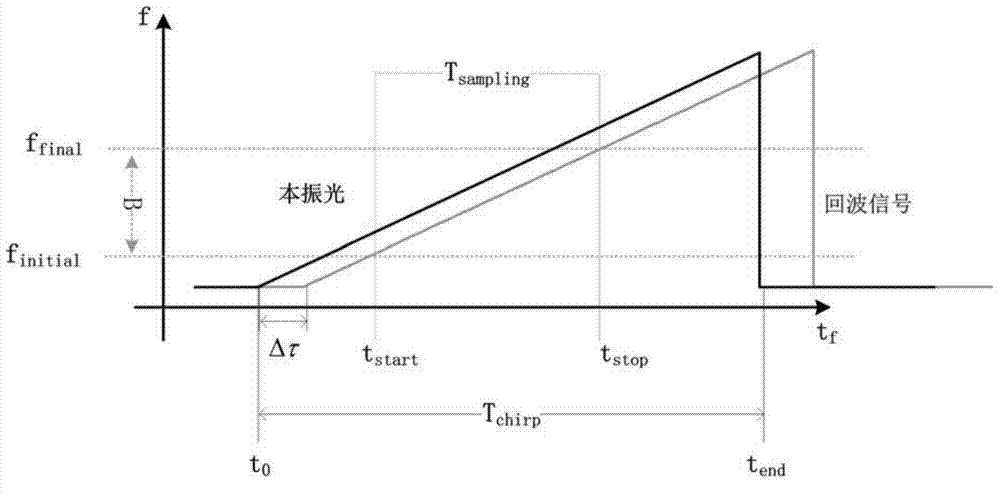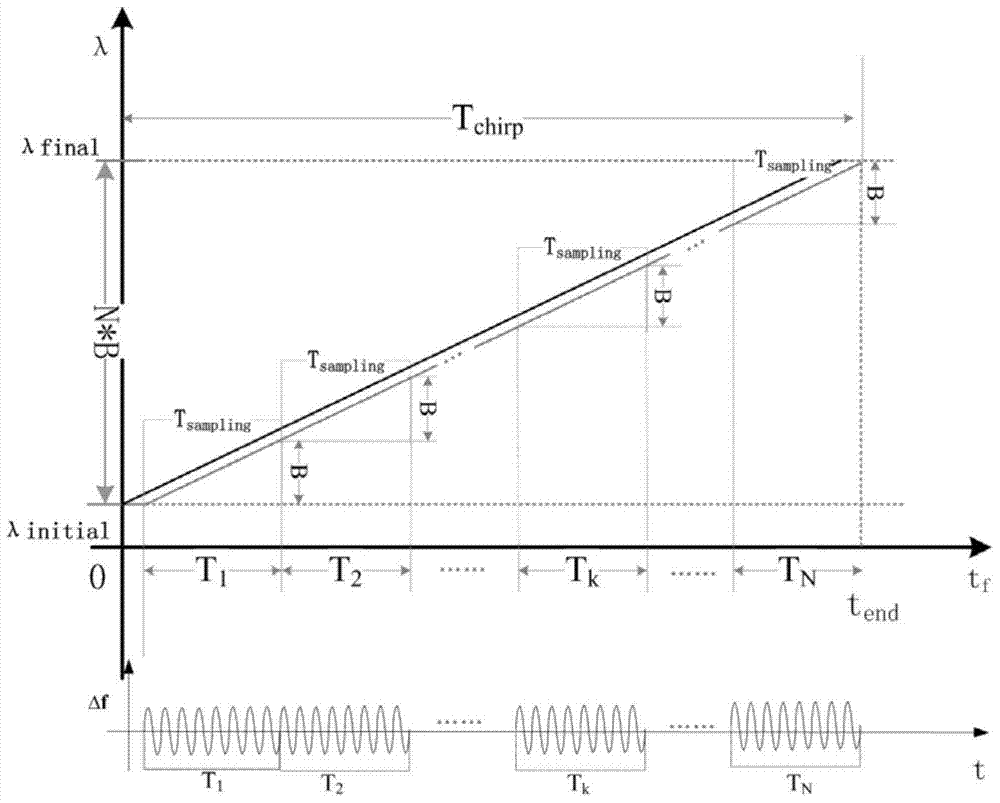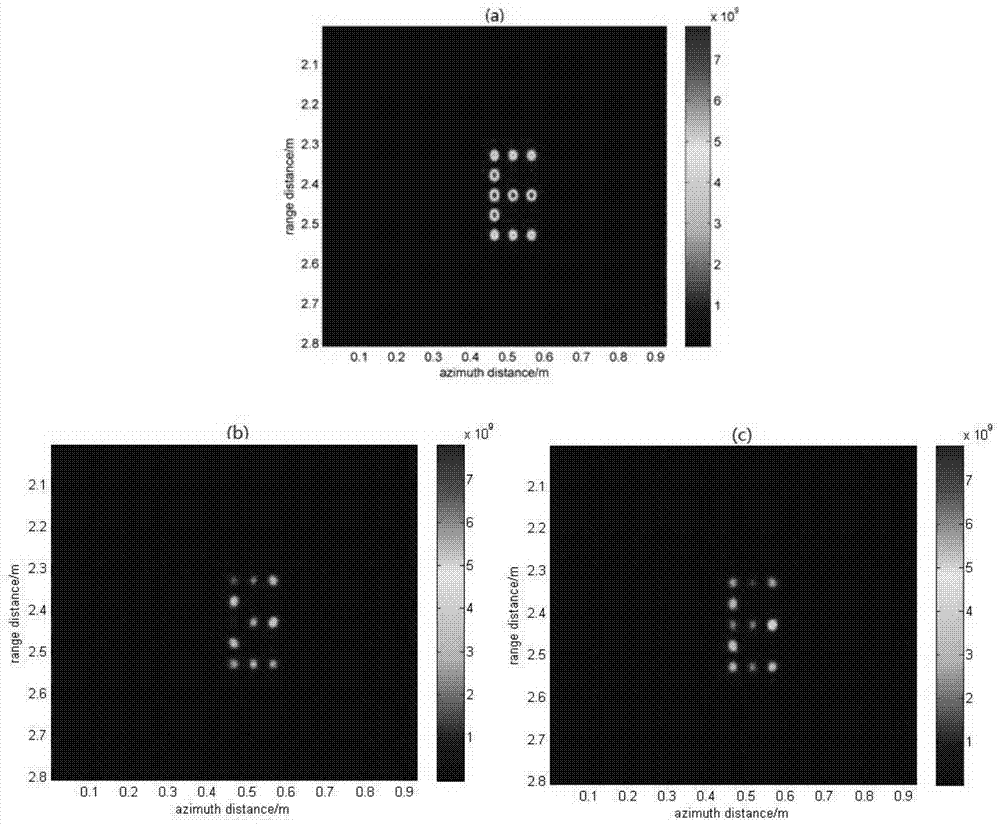SAIT distance imaging speckle effect suppression method
A technology of synthetic aperture laser and imaging radar, applied in instruments, measuring devices, utilizing re-radiation, etc., can solve the problems affecting SAIL imaging quality, affecting detection signal-to-noise ratio, etc.
- Summary
- Abstract
- Description
- Claims
- Application Information
AI Technical Summary
Problems solved by technology
Method used
Image
Examples
Embodiment Construction
[0025] The present invention will be described in further detail below in conjunction with the accompanying drawings and embodiments, but the protection scope of the present invention should not be limited thereby.
[0026] A method for suppressing speckle effect in range-directed imaging of synthetic aperture laser imaging radar, characterized in that the chirped pulse signal emitted by the laser, that is, the bandwidth of the chirped pulse signal is N (N ≥ 2) times the bandwidth required for the design resolution, and the The echo signal and the local oscillator signal are detected by optical heterodyne, and the obtained data is divided into N parts, which are independently imaged and processed, and the final image output is an incoherent superposition of N images.
[0027] Described chirp signal and optical heterodyne sampling process are as figure 1 shown. The pulse starts from the laser trigger signal t=t0 and lasts until t=t end Cut-off, that is, the pulse width of the...
PUM
 Login to View More
Login to View More Abstract
Description
Claims
Application Information
 Login to View More
Login to View More - R&D
- Intellectual Property
- Life Sciences
- Materials
- Tech Scout
- Unparalleled Data Quality
- Higher Quality Content
- 60% Fewer Hallucinations
Browse by: Latest US Patents, China's latest patents, Technical Efficacy Thesaurus, Application Domain, Technology Topic, Popular Technical Reports.
© 2025 PatSnap. All rights reserved.Legal|Privacy policy|Modern Slavery Act Transparency Statement|Sitemap|About US| Contact US: help@patsnap.com



